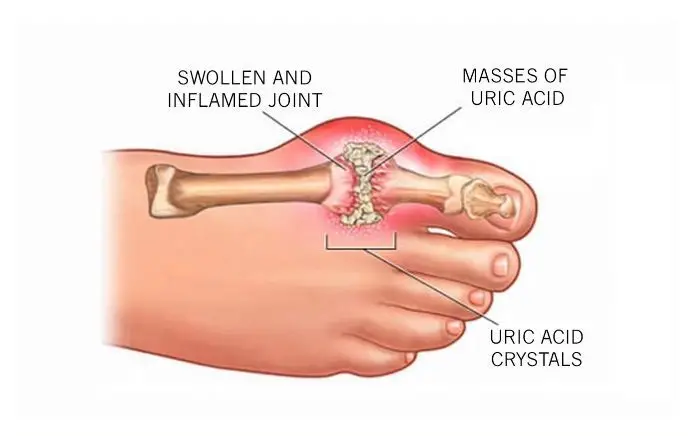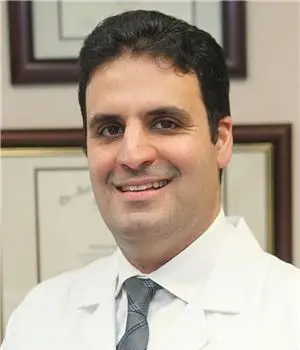GOUT CONDITION
What Is Gout?
Gout is a painful inflammatory joint condition caused by elevated levels of uric acid in the bloodstream. This buildup leads to the formation of sharp urate crystals that deposit in joints or surrounding soft tissues, triggering sudden, intense pain and swelling.
At SoCal Foot and Ankle Doctors, with offices in Santa Monica and at the Cedars-Sinai Medical Towers, we specialize in the diagnosis and treatment of gout attacks in the foot and ankle, including chronic and hard-to-recognize cases.

What Causes Gout?
Gout is linked to the abnormal breakdown of purines, natural substances found in human cells and certain foods. As purines break down, uric acid is produced as a waste product. When the kidneys cannot efficiently excrete uric acid, it builds up in the bloodstream, leading to:
- Crystal formation inside joints
- Soft tissue deposits (tophi)
- Sudden, inflammatory responses
Common Triggers for Gout Attacks
- Red meat, shellfish, and organ meats
- Alcohol, especially beer
- Sugary beverages (high-fructose corn syrup)
- Dehydration
- Certain medications (e.g., diuretics)
- Kidney disease or reduced kidney function
Symptoms of Gout
- Sudden onset of severe joint pain, often overnight
- Swelling, redness, and warmth over the joint
- Extreme tenderness — even light touch or bed sheets may cause pain
- Limited mobility in the affected joint
The most classic site for a gout attack is the big toe joint (1st metatarsophalangeal joint). It can also affect the knee, ankle, or midfoot, though it typically occurs in only one joint at a time.
In less common cases, gout may appear in multiple joints or unusual areas, leading to misdiagnosis or delayed treatment.
Gout Diagnosis in Santa Monica & Cedars-Sinai
Our podiatrists perform a thorough evaluation, which may include:
- Physical exam and joint assessment
- Uric acid blood tests
- Joint fluid analysis (if needed)
- Digital imaging (X-ray or ultrasound) to rule out other causes like infection or arthritis
We also assess for underlying conditions that contribute to uric acid buildup, such as kidney function issues or medication side effects.
Gout Treatment Options
Acute Gout Flare Management:
- Anti-inflammatory medications (NSAIDs)
- Colchicine or corticosteroids
- Cold compresses and rest
- Avoidance of trigger foods and alcohol
Long-Term Gout Management:
- Urate-lowering medications (e.g., allopurinol)
- Dietary changes and hydration strategies
- Lifestyle modifications to reduce flare frequency
- Custom orthotics or shoe modifications for chronic joint protection
Prompt treatment of gout not only reduces pain but also prevents joint damage and recurring attacks.
When to See a Podiatrist
If you’re experiencing sudden joint pain in your foot, ankle, or toe, don’t ignore it. What feels like a sprain or infection may actually be gout. Our team at SoCal Foot and Ankle Doctors provides accurate diagnosis and targeted treatment so you can get back to living pain-free.
Visit our office in Santa Monica or the Cedars-Sinai Medical Towers for expert foot and ankle gout care.
Our Docters
Our Board Certified Podiatrists
Socal Foot and Ankle doctors are committed to delivering the most exceptional treatments.

Board Certified Foot & Ankle Specialist
Office Time
Location: Santa Monica
Mon – Thur: 9:00 AM – 5:00 PM
Friday: 9:00 AM – 5:00 PM

Board Certified Foot & Ankle Specialist
Office Time
Location: Santa Monica
Mon – Thur: 9:00 AM – 5:00 PM
Friday: 9:00 AM – 5:00 PM
Request Appointment
NON-INVASIVE ADVANCED TREATMENT
BOARD CERTIFIED
FOOT & ANKLE
Surgeons
Years Experience
Happy Patients
Location
Local Partners
